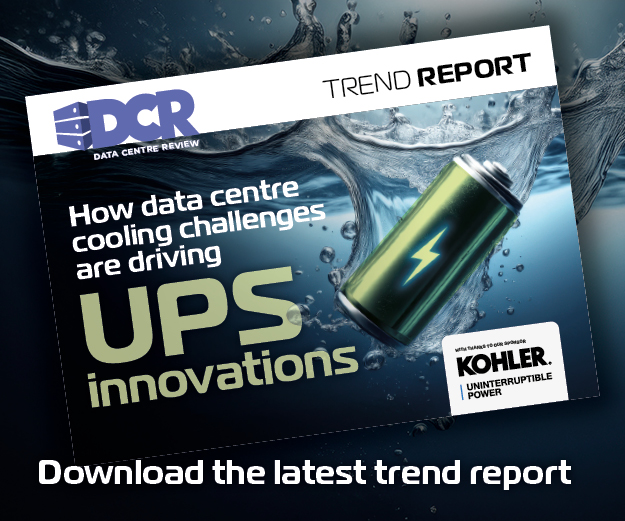James Hart, CEO at BCS, gives an outline of the trends that have shaped the data centre sector over the last decade and a half.
Since 2009, the BCS Report has been tracking the thoughts of the industry twice a year, documenting the views of 3,000 senior datacentre professionals across Europe. Over the course of the survey work there has been a significant shift in these views in some areas which is perhaps unsurprising, given the significant changes in this fast-moving sector over the past 14 years.
Late to the (third) party
For suppliers of data centre services – colocation operators and IT integrators/web hosting providers – the desire to manage their own facilities remains strong in our most recent survey, with over three-quarters disclosing that 80% or more of their data centre portfolio is internally managed. This degree of control gives them the flexibility to be more agile whilst responding to changing client demands, without the potential limitations in a commercial and physical sense that third-party management may present.
In contrast, our corporate stakeholder respondents continue to trust outsourcing a larger proportion of their data centre management to third parties, with some four-fifths indicating that they manage at least 80% or more of their portfolio externally, a similar proportion to that recorded six months ago, and a notable increase over the last decade from around half.
Over the course of our survey work, there has been a significant shift in the perception of end-users towards third-party solutions. For instance, let’s consider a question we asked respondents in 2010 about their belief in the future adoption of cloud computing being limited due to ongoing security concerns. At that time, 57% of respondents expressed their agreement with this statement. However, as shown in our latest survey, the widespread adoption of third-party solutions indicates that these fears have been effectively overcome. Advancements in technology, enhanced security protocols, and the added benefits of service flexibility and cost savings on expensive data centre constructions have made these solutions highly appealing to many users.
However, it is important to note that in recent years there is more evidence supporting the appeal of a blended approach by certain individuals. This approach combines the advantages of both external and in-house solutions, enabling enterprises to retain a higher level of control over specific aspects of their infrastructure that they prefer to keep internally managed. At the same time, they can still benefit from outsourcing other parts of their data centre environments.
Expansion drives change
Corporate expansion or contraction has been long established as the most highly ranked factor driving change in both internally controlled and third-party data centres. This has certainly been the case since we undertook the first of these surveys in 2009. Our latest survey confirms the continuation of this trend, with around a third citing it as the top priority for both internal and external solutions; a proportion largely un-changed over the past three surveys.
Similarly, supply plans have remained strong since 2010 and the enduring strength of the European data centre market highlights the industry’s ability to thrive despite multiple obstacles, including macroeconomic challenges and geopolitical difficulties over the years. This robustness is illustrated by the continuing confidence shown by those charged with delivering new technical real estate stock to the market. All our developer and investor stakeholders have stated in our latest survey that they expanded their data centre stock during the past 12-month period.
This marks the third consecutive survey in which we have observed such widespread and near-universal levels of expansion amongst this group of players. It is important to note that this progress occurs against a backdrop of some of the most challenging economic circumstances that we have experienced for quite a while, and only a few years after the global problems caused by the coronavirus.
Looking forward, there is ongoing evidence that the delivery of new stock is likely to continue with little sign of a slowing in its pace. For the third successive survey some 95% of developers and investors revealed that they are anticipating expanding their portfolio over the coming year, levels last experienced a decade ago, and some of the highest levels we have recorded ever in the survey.
Risk appetite
One way of assessing the market’s prospects in the short- to medium-term involves evaluating the risk appetite of developers and investors. For the past 14 years, one benchmark we have consistently monitored is the proportion of secured letting area necessary before construction can commence on a project. By tracking the minimum level of pre-secured occupancy required, we are able to see the industry’s willingness to invest and undertake new developments.
Once again, this year’s analysis of responses suggests that there is a rising degree of positive sentiment amongst developer participants over the past six months with, on average, a lower degree of pre-letting required. The number of respondents requiring at least 75% or more of their scheme to be pre-committed has fallen from 27% to some 18% this time around, the second successive survey we have noted a fall.
In addition, further evidence of this increased positivity is illustrated by the proportion of those who are prepared to green-light the build-out having secured a pre-lease on 25% or less. This quantity has risen from zero a year ago to around 14% six months later and now stands at some 22%. This is also reminiscent of 10 years ago.
It’s all about power
One thing that has not changed since we began this survey in 2009 is the availability of power, which has consistently been identified as the single most important factor driving data centre choice amongst our respondents. Our latest survey once again reiterates this as the case with nearly three-quarters citing it as their number one driving choice, unchanged on that proportion recorded last winter. In addition, amongst our developer and investor respondents, the proportion that ranked this first stood significantly higher than the average, at some 91%.
This is set to continue, as 81% of our respondents reported their expectation of rising consumption levels over the next three years and 88% expect a rise in the cost of power to increase the demand for power efficient data centre space over the next three years – up from the 82% noted six months ago.
I have been in the data centre sector for over 20 years and have seen first-hand the phenomenal changes that have transformed the industry. The sector remains resilient, agile and determined to meet the new challenges that are likely just around the corner.



